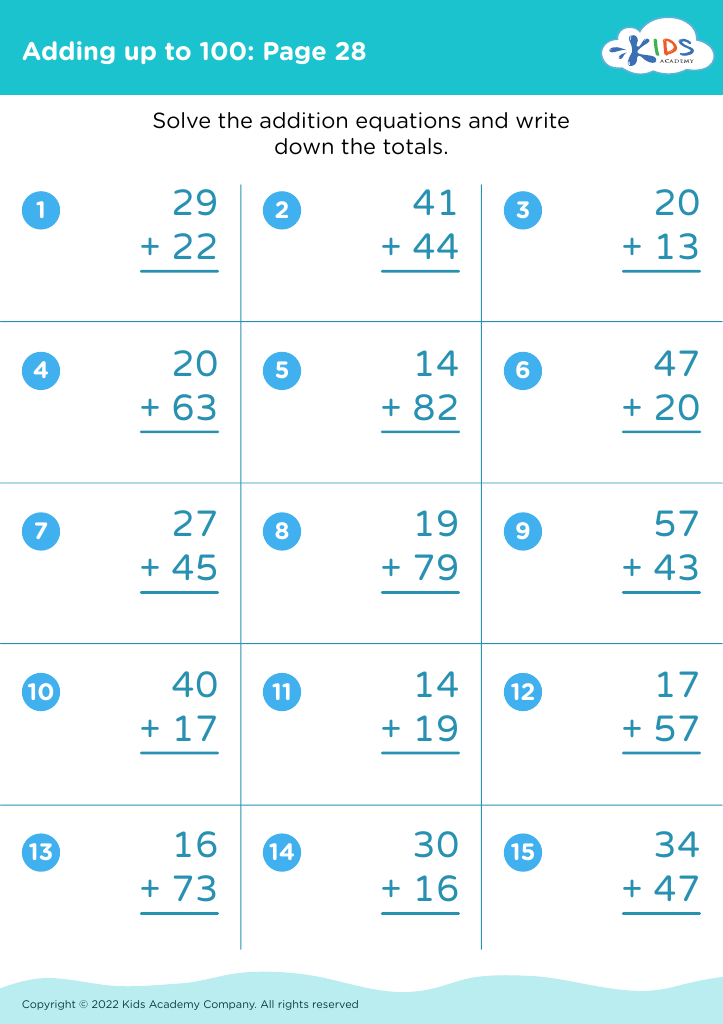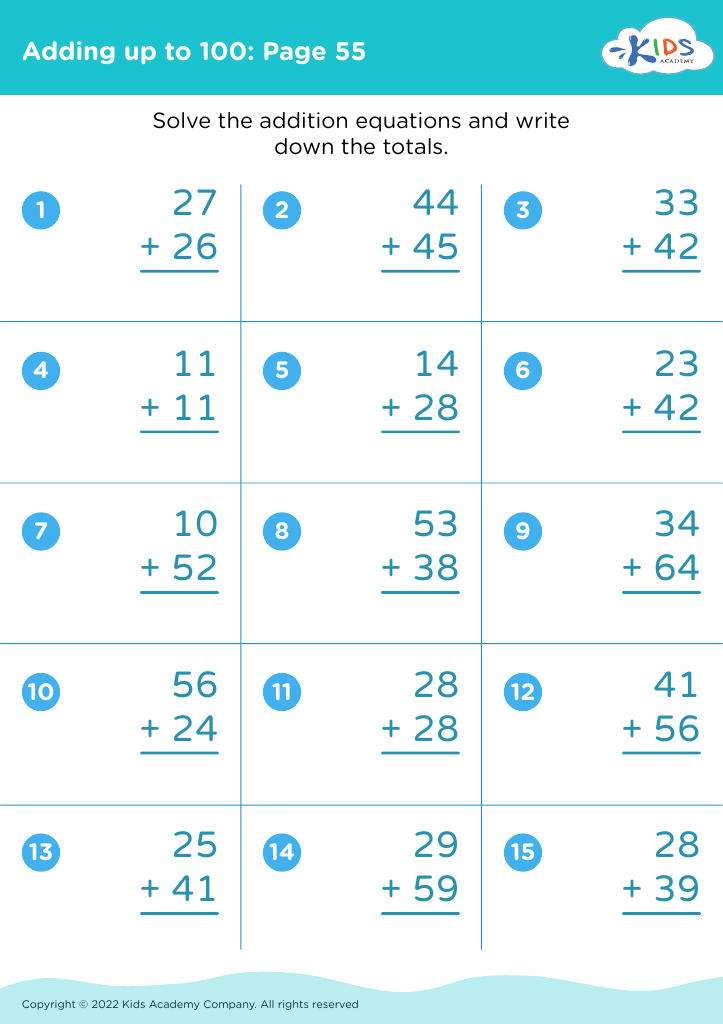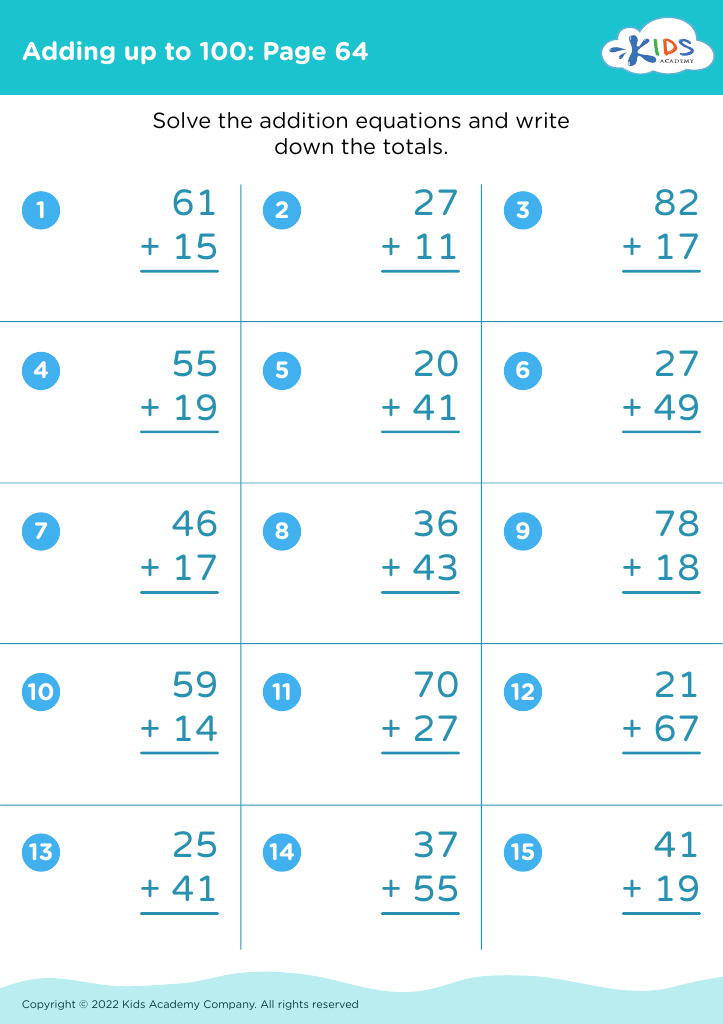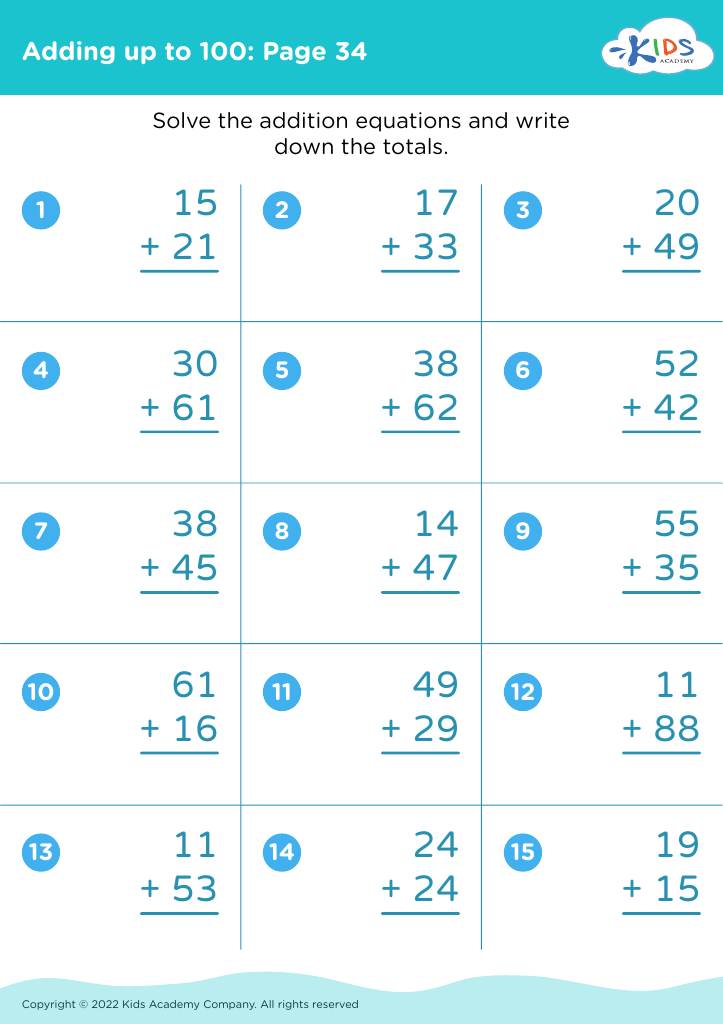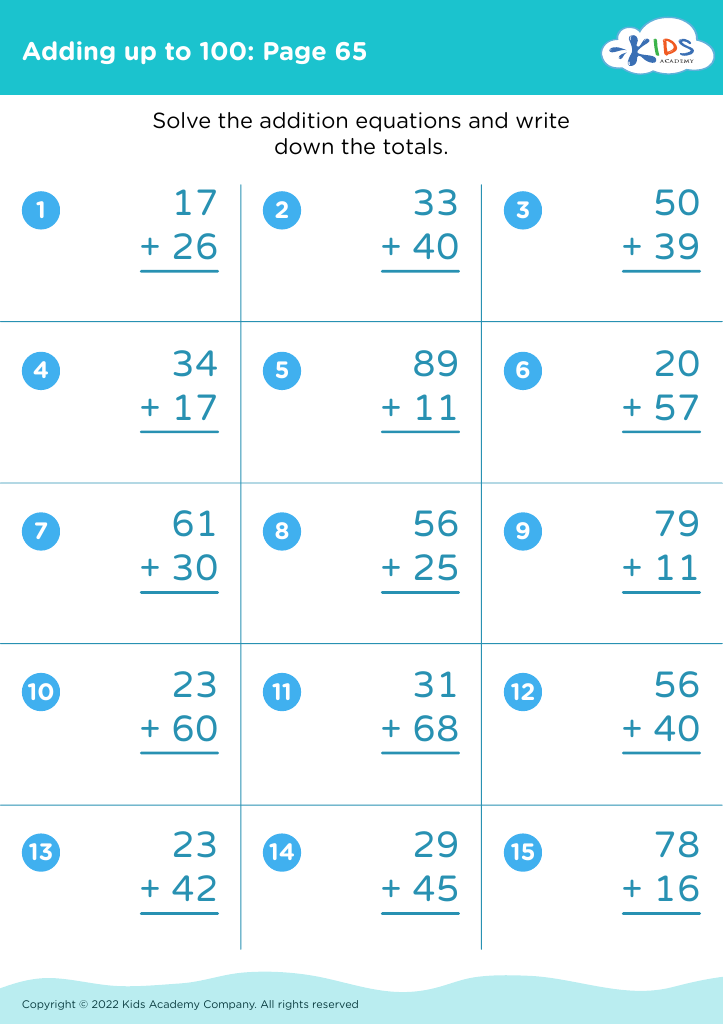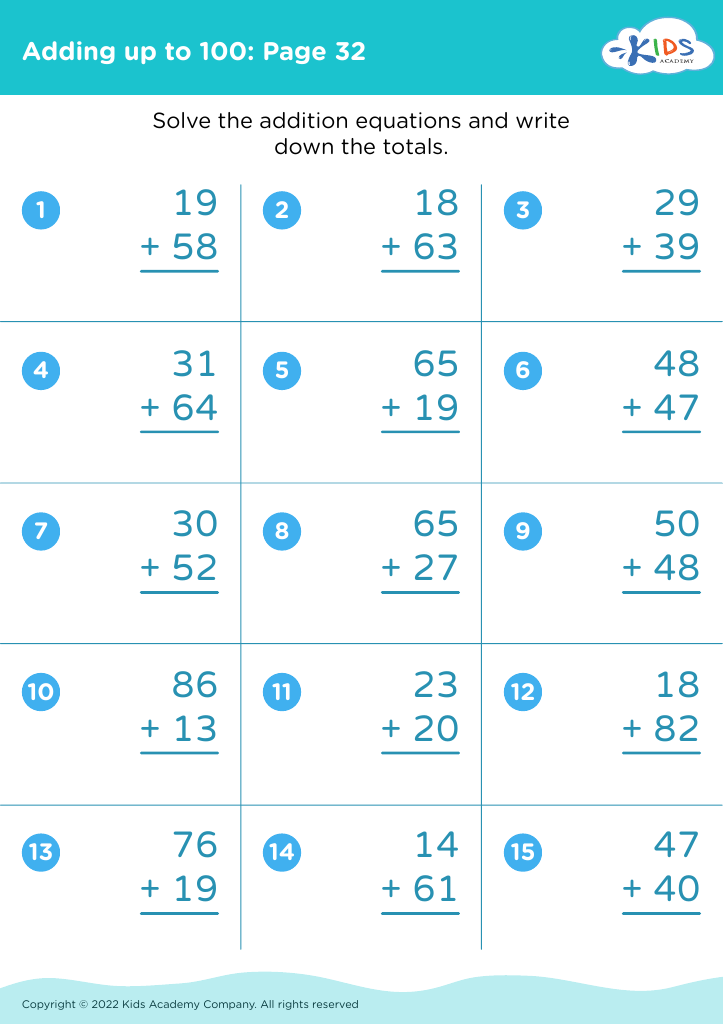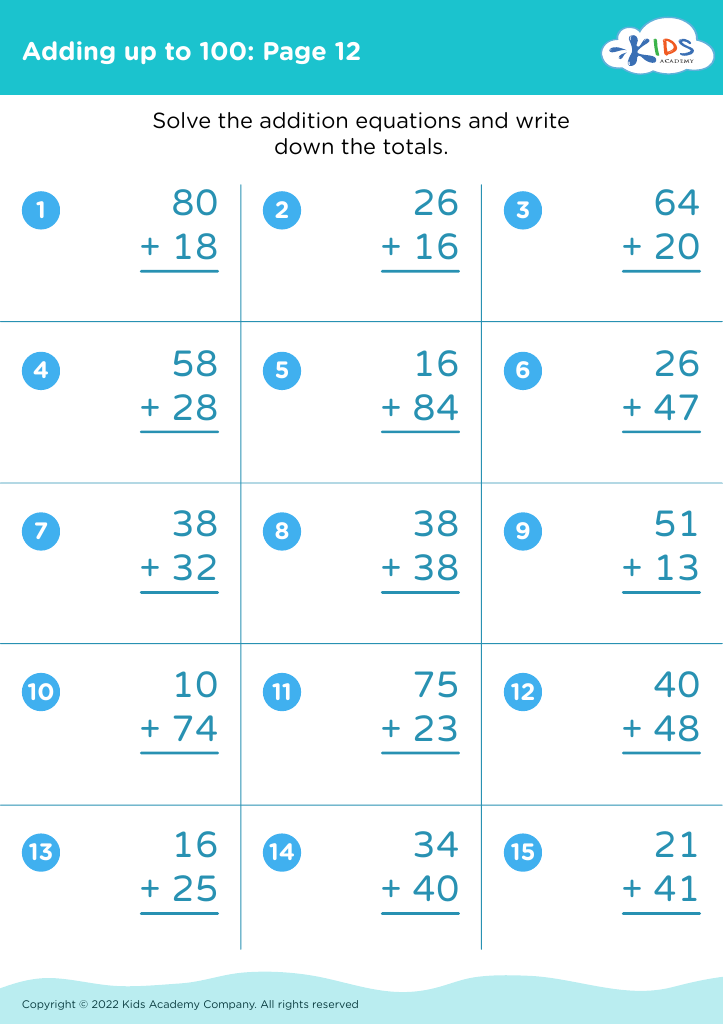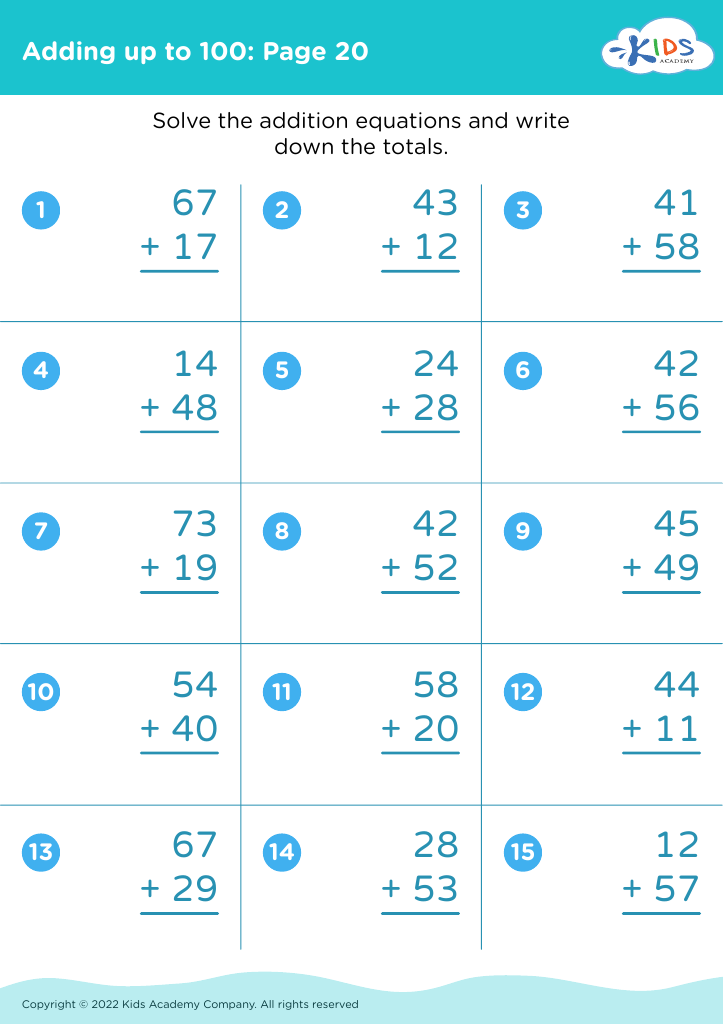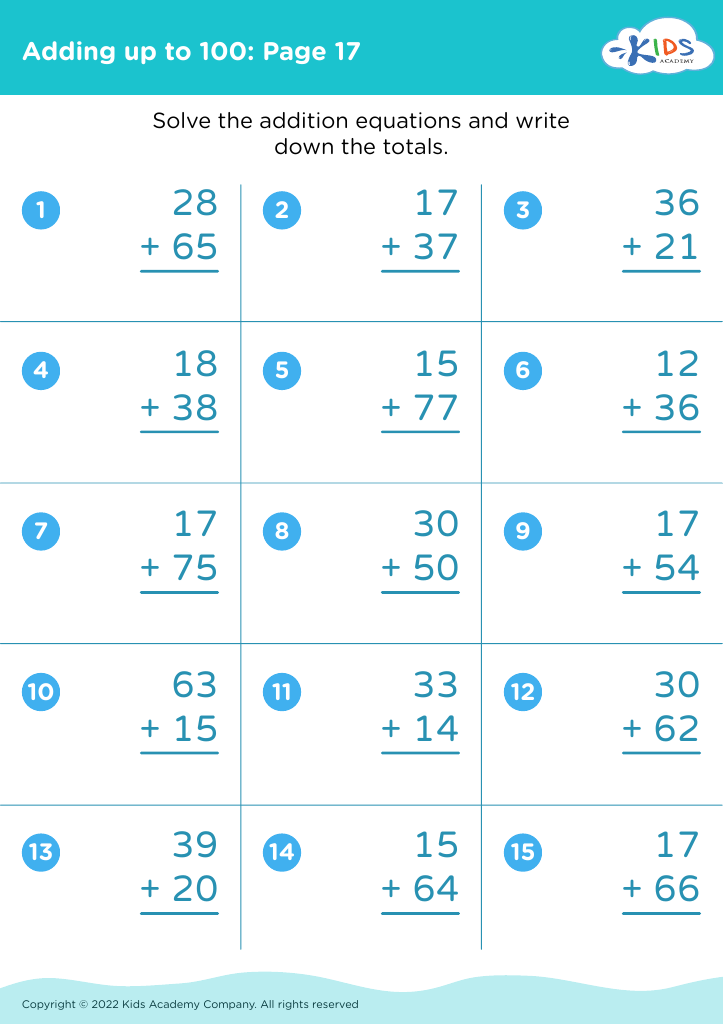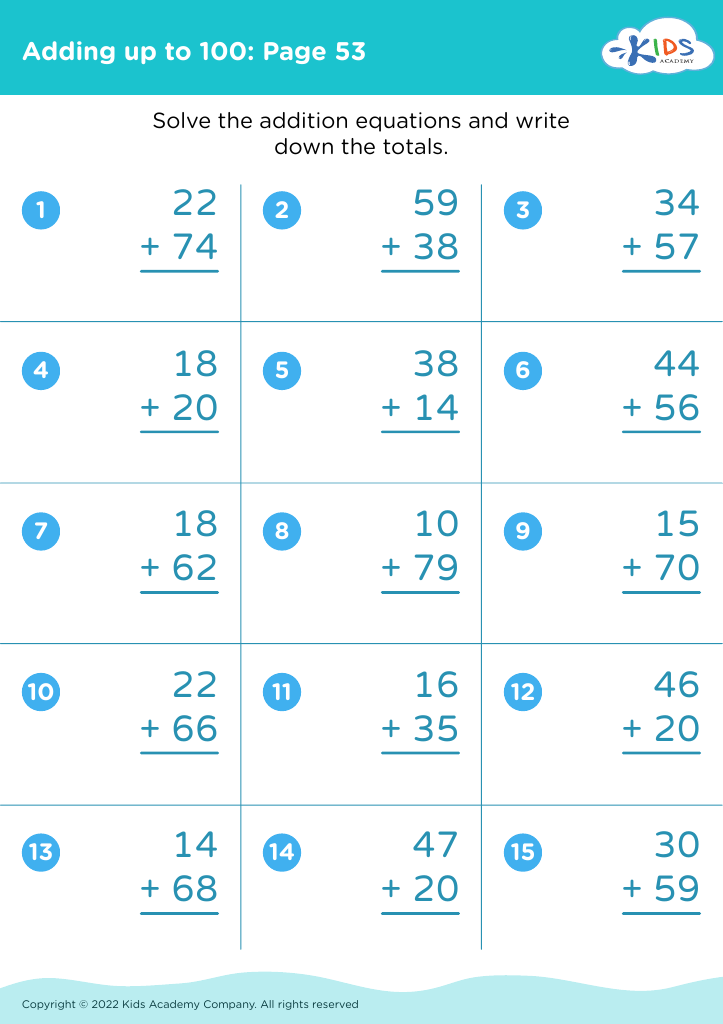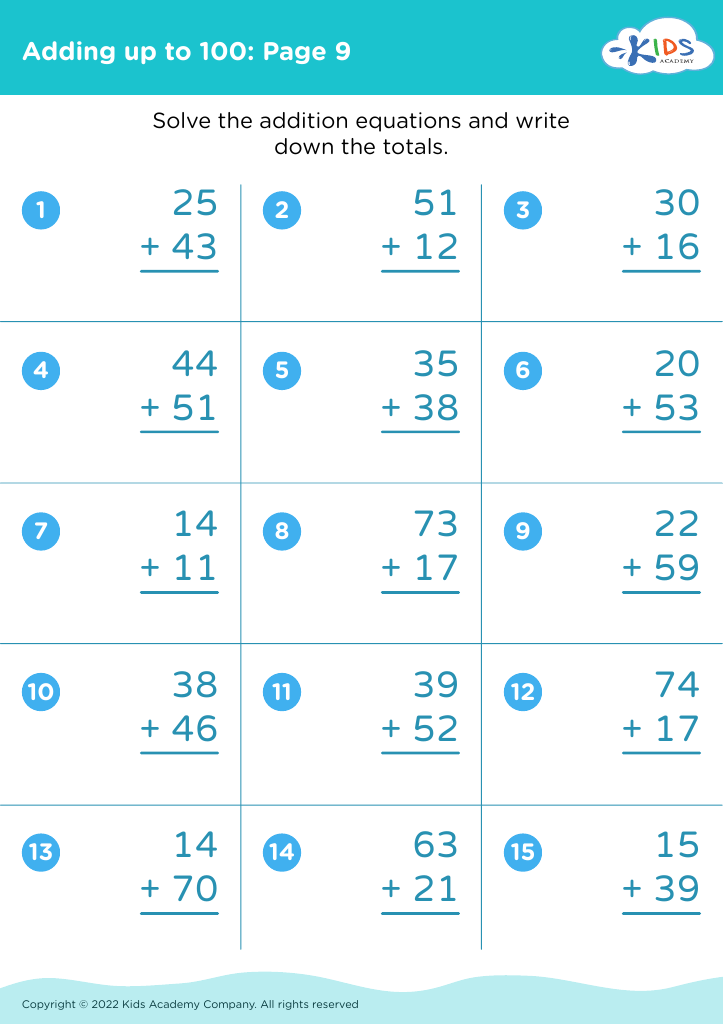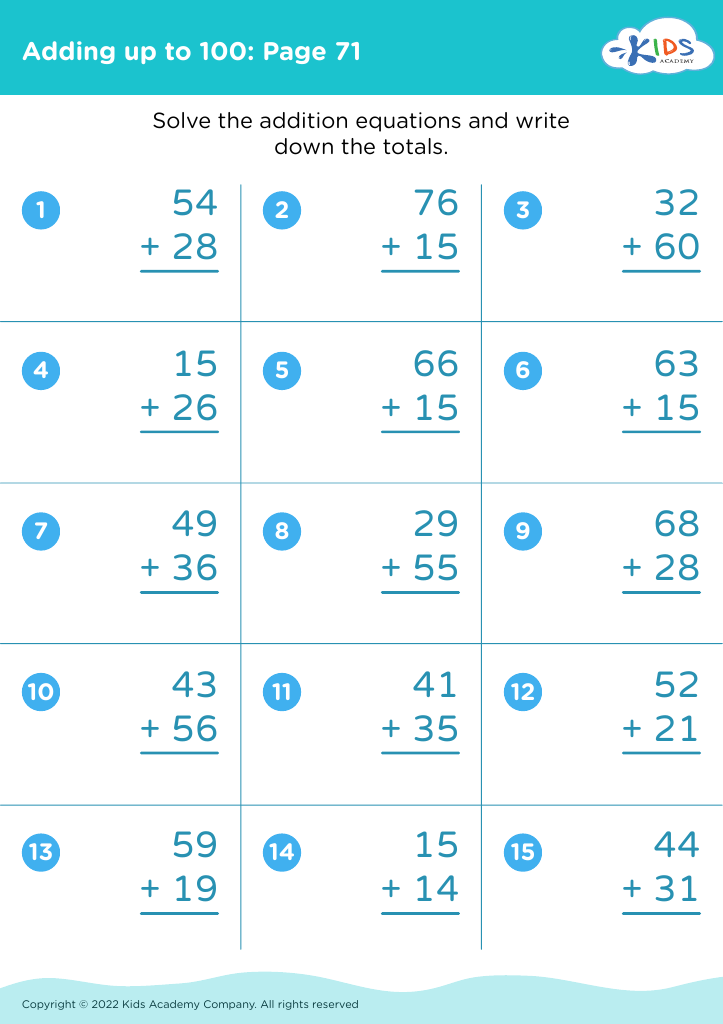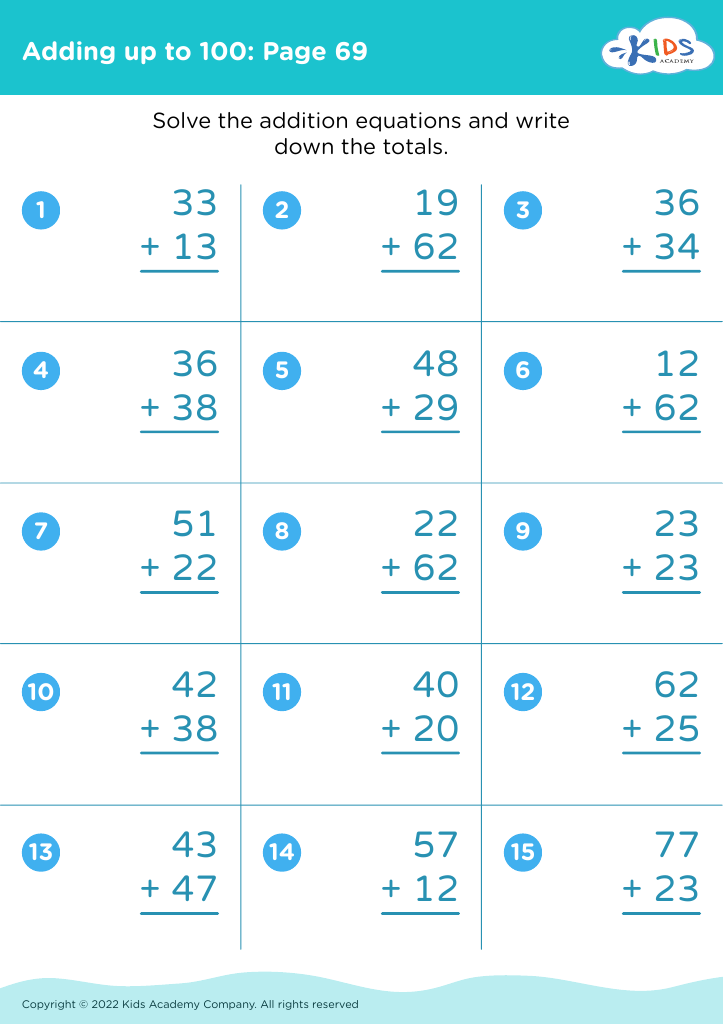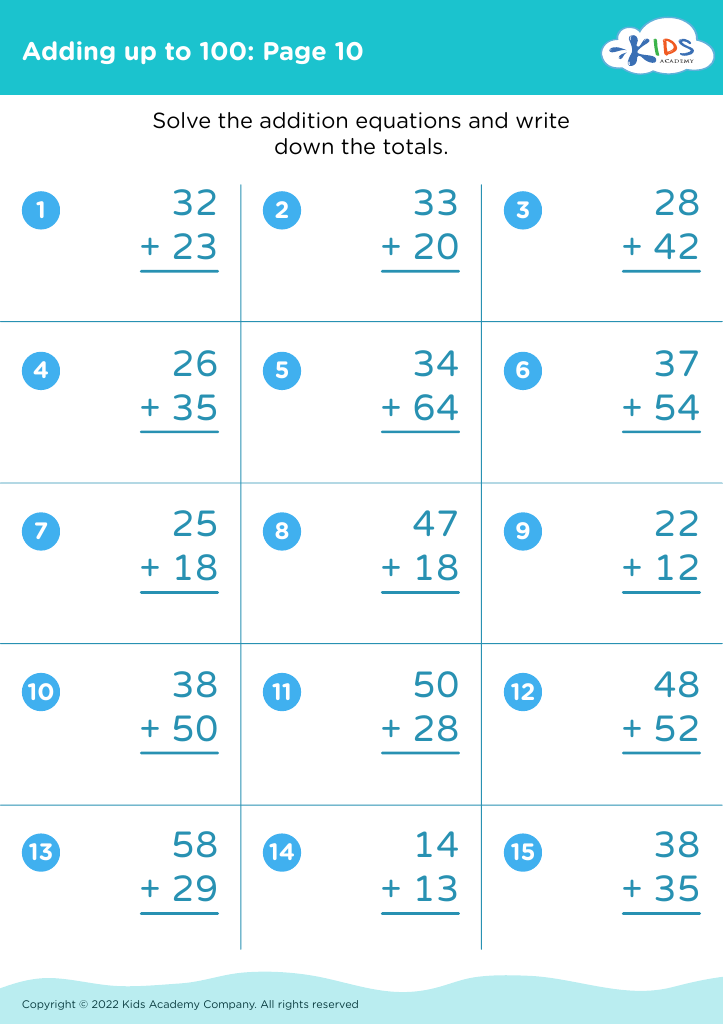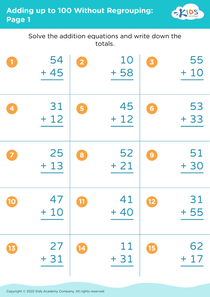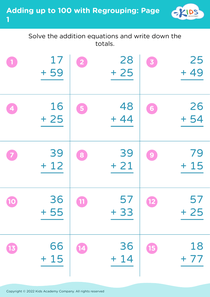Understanding fractions Adding up to 100 Misc Worksheets for Ages 6-7
16 filtered results
-
From - To
Discover engaging and educational printable worksheets focused on understanding fractions for children aged 6-7. These colorful resources are designed to make learning fun, helping young learners master the basics of fractions with ease. The worksheets include activities such as identifying, comparing, and creating fractions, ensuring a solid foundation for future math skills. While learning fractions, children will also enhance their problem-solving abilities and boost their confidence in math. Perfect for teachers and parents, these materials aim to support effective learning at home or in the classroom. Embrace the joy of learning with our Understanding Fractions Adding up to 100 Misc Worksheets!
Understanding fractions, adding up to 100, and other miscellaneous early math skills are foundational elements crucial for a child's academic and life success, especially around the ages of 6-7. During these formative years, children are building the basic framework for more complex mathematical concepts they will encounter later. Mastery of fractions, for instance, aids in developing a child’s ability to understand division, proportions, measurements, and even aspects of geometry. These skills have real-life applications such as cooking or sharing items fairly, making them relatable and functional in everyday activities.
Adding up to 100 strengthens a child's number sense, which is the ability to understand, relate, and connect numbers. This skill is integral not only in advancing to more challenging arithmetic but also in improving a child's confidence in handling numbers. Such computational skills form the base for future topics like algebra and statistics.
Miscellaneous math skills, including graphical understanding, basic shapes, and measurements, lay a well-rounded foundation. They encourage critical thinking and problem-solving abilities, which are pivotal beyond mathematics, impacting subjects like science and even everyday decision-making. Thus, paying attention to these areas ensures holistic developmental growth and prepares children for more advanced educational stages.
